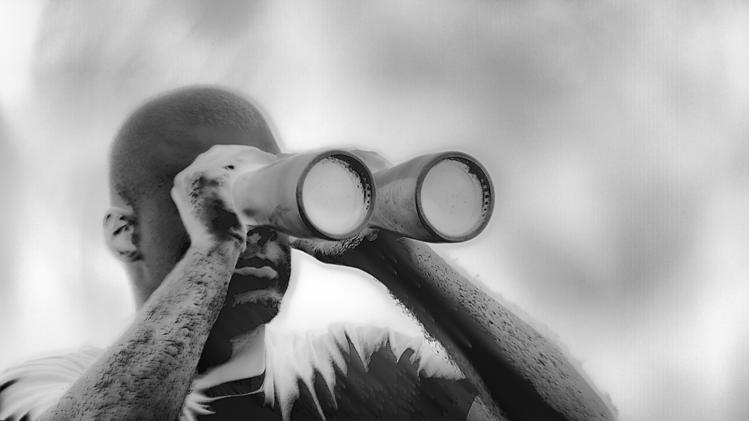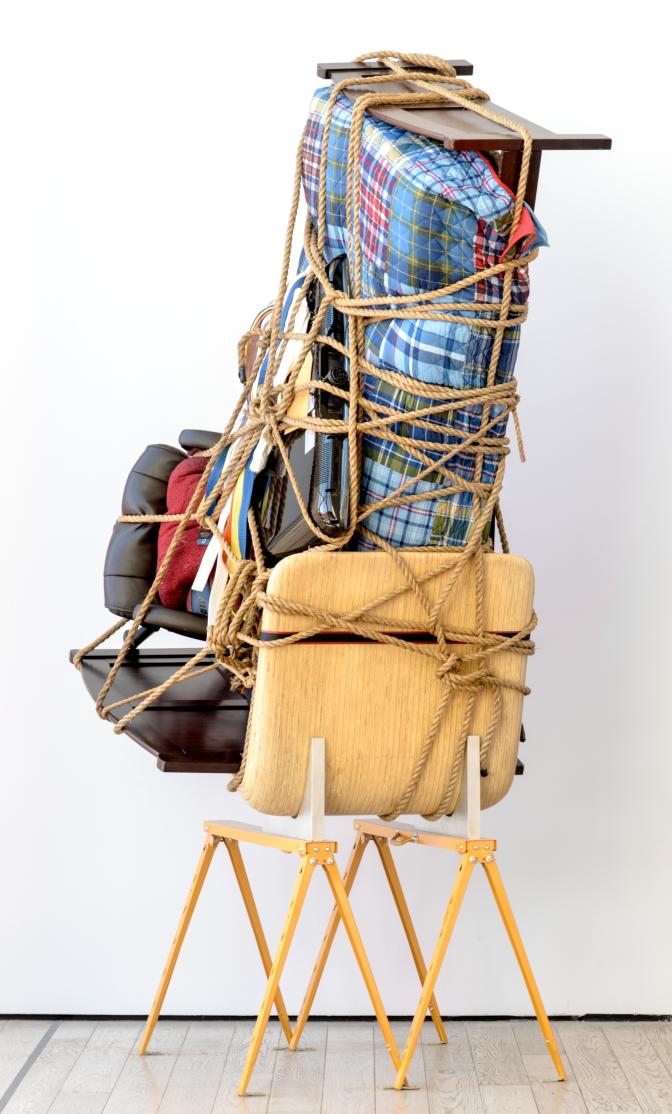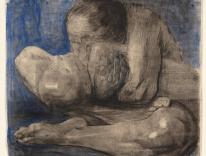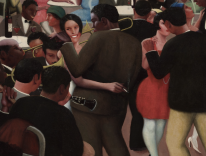
Today more than 68.5 million people are either refugees, asylum seekers, or internally displaced within their country of birth, according to the United Nations High Commissioner for Refugees. The U.N. also reports that one out of every seven people living in the world today can be classified as a migrant. In October, eight women and thirty-one men, all Vietnamese nationals, were found suffocated in a truck in England after having been smuggled across the Channel from Belgium. In November, the ACLU reported that since July 2017, 5,400 children—all fleeing violence and poverty in Central America—have been separated from their parents at the U.S.-Mexico border.
These are words and numbers. We glide over them quickly. Visual art, by contrast, grabs our attention, keeping us from racing by and forcing us to confront what we see. A new exhibit at the Institute for Contemporary Art in Boston, When Home Won’t Let You Stay: Migration through Contemporary Art (its title comes from a poem by the Somali-British poet Warsan Shire), asks us to look beyond statistics to seek “a trace of the human.” Though the migration crisis is one of the world’s most pressing and intractable problems, curators Ruth Erickson and Eva Respini make clear that the exhibit is not meant to be read as a “political manifesto.” Rather, the gathered works and their various mediums—video, photography, sculpture, installation—tackle the reality of migration and displacement in order to expose “the slippery and increasingly inadequate nature of our common language” around the experiences of migrants and refugees.
Many of the works do so by incorporating everyday items left behind during perilous journeys. One of the most arresting is a twenty-eight-foot-long collage of forty-eight color photographs, titled Artifacts found from California to Texas between 2013 and 2015, by Richard Misrach and Guillermo Galindo. The two artists walked the borderlands taking pictures of the discarded objects the title so blandly references: a tube of toothpaste, an aqua-green pair of children’s shoes, a pocket-sized New Testament. The owners of these disparate items were nowhere to be seen, but the images hinted at their presence—and spurred questions. How were the shoes lost? Why would someone leave behind a copy of the New Testament? Were these discarded intentionally or by accident? In haste, or in despair?

Other works actually bring such objects into the galleries, including them in installations that disclose the raw violence of forced migration. In Mexican artist Camilo Ontiveros’s Temporary Storage: The Belongings of Juan Manuel Montes (2017), a bed and mattress, some framed photographs, a basketball, boxing gloves, a three-ring notebook, and several books are bound together with rope. Juan Manuel Montes, the California man who once owned them, had been stopped on the street by a Customs and Border Patrol agent one night in 2017; within three hours he was deported to Mexico. He was twenty-three at the time, and had been living in the United States since he was nine, a beneficiary of the Deferred Action for Childhood Arrivals (DACA) program. Montes was the first known DACA recipient to have suffered such a fate. My eyes were drawn to his bed. Supported by two metal sawhorses, it thrusts into the air—upended, just as Montes’s life was. Another installation, French artist Kader Attia’s La Mer Morte (The Dead Sea), is similar but arranges its objects even more provocatively. Denim jackets, sweaters, underwear, and jeans are strewn across a cement floor. They evoke the floating debris that remains when boats carrying African and Middle Eastern migrants capsize in the Mediterranean Sea.
According to the International Organization for Migration, about two thousand people died trying to cross the Mediterranean to Europe in 2018 alone. We’ve become accustomed to seeing images of people who’ve perished in attempting to start lives somewhere else. But one of the most powerful works in the exhibit is also one of its most hopeful. It’s a sequence of photos by Dutch artist Rineke Dijkstra. She took fifteen pictures, one every year, of a Bosnian refugee named Almerisa, beginning with the latter’s 1994 arrival in the Netherlands at the age of six. As the photos proceed, we see Almerisa develop into an adult, and then a mother. She’s an image of a refugee not in crisis, but flourishing.
There’s a difference, of course, between merely seeing refugees and adopting their perspectives. This is made palpable in Irish artist Richard Mosse’s video installation, Incoming, projected across three large screens. Mosse uses a military-grade thermal-imaging camera to record migrants as they travel dangerous routes from the Middle East to Europe; we see them marching along rocky beaches, rounded up in camps, and transported in trucks. But we also see them praying to Jesus and the Virgin Mary, or bowing to face Mecca. Though the thermal imaging makes them look like ghosts, it’s only a trick of the camera. Mosse’s subjects aren’t phantasms but human beings, fleeing violence and religious persecution. Thus, the limitation of the non-refugee, non-migrant gaze—incapable of fully registering the humanity of the people it records—is revealed. We see shadows, not people.
The show also draws attention to a less well-known cause of migration: anti-LGBT hatred. Colombian artist Carlos Motta’s The Crossing uses video to tell nine distinct stories shown on six screens. The work unfolds as a series of interviews with LGBT migrants, now residents of the Netherlands. All are compelling, but two stand out. One is the account of Anwar, who weeps while recalling his escape from the Middle East—not only from the cruelty of government authorities, but also from his own family and friends. The other is the story of Butterfly, who found herself stranded without food or water on a motorless boat with fifty-seven other migrants from Syria in the Mediterranean. Butterfly used a vanity mirror to reflect the sunlight, thereby catching the attention of the Greek coast guard and saving the lives of all on board.
For all the pain of leaving home, and the struggle to establish a new one, many migrants and refugees still feel the tug of longing well after their resettlement. Few works in When Home Won’t Let You Stay communicate this longing as viscerally as Korean artist Do Ho Suh’s fabric sculptures. Using transparent polyester, stainless-steel wires, and metal rods, Suh crafts lifesize reproductions of different rooms from his childhood home.The rooms are cold, and entering one is like inhabiting a three-dimensional silhouette or a photographic negative—they’re technically places, but they’re not quite there. Yet Suh also adds warm and inviting minor details, like carefully constructed doorknobs and windowsills, making them feel like fabric playhouses. Clearly, fond memories of his former home still pull at him.
Everything in this exhibit poses the question, “What is a home?” Is it, as Pope Francis claimed in Laudato si’, something we hold in “common,” a good to which everyone on Earth has a basic and universal right? If so, why does a growing percentage of the world’s population lack a stable place to live? These questions demand an answer from anyone who does have a stable place to live. We have a moral obligation to respond—both personally and politically—to the human suffering these works so urgently lay bare.
Please email comments to [email protected] and join the conversation on our Facebook page.
Previous Story
The Life You Lead
Next Story
Somewhere in Between


